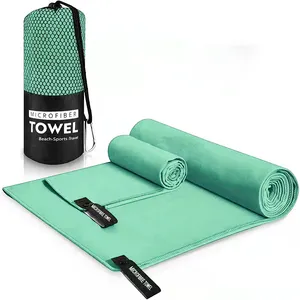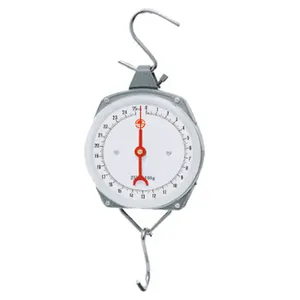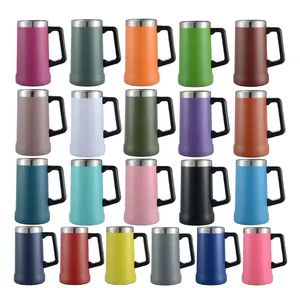Phổ biến trong ngành của bạn






Máy bán nước đá tự động 24 giờ ngoài trời, thích hợp cho máy bán nước đá tự động số lượng lớn và đóng gói
2.300,00 US$ - 2.800,00 US$
Đơn hàng tối thiểu: 1 Đơn vị







Ướp lạnh nước uống Máy bán hàng tự động tự động nước tinh khiết Máy bán hàng tự động để bán nước tinh khiết
500,00 US$ - 550,00 US$
Đơn hàng tối thiểu: 1 Bộ







Tự động cân 1kg 2kg 5kg Ice Cube Túi máy đóng gói với không thấm nước loại Ice Cube Ice ống túi bao bì máy nhà máy
20.157,00 US$ - 20.357,00 US$
Đơn hàng tối thiểu: 1 Bộ







Điều Hòa Không Khí Trang Trại Nhà Kính Điều Hòa Không Khí Làm Mát
990,00 US$ - 1.560,00 US$
Đơn hàng tối thiểu: 1 Bộ







Máy Bán Đá Tự Động Maquina Bán Chạy
3.200,00 US$ - 3.600,00 US$
Đơn hàng tối thiểu: 1 Đơn vị
Vận chuyển mỗi chiếc: 494,68 US$







2024 đôi vuông Pan Thái Lan lạnh đá phiến đá cẩm thạch Top Fry Ice Cream Maker Máy
Sẵn sàng vận chuyển
925,00 US$
Đơn hàng tối thiểu: 1 Đơn vị
Vận chuyển mỗi chiếc: 5.000,00 US$





Máy Bán Đồ Uống Tự Động Tự Phục Vụ 24 Giờ Tùy Chỉnh Thương Mại Phổ Biến
1.400,00 US$
Đơn hàng tối thiểu: 10 Bộ






1000kg nóng bán thương mại Ice Maker công suất lớn Ice ball maker, Ice Cube Máy làm
3.000,00 US$ - 3.200,00 US$
Đơn hàng tối thiểu: 1 Đơn vị






Máy Làm Kem Cửa Hàng Cà Phê Thương Mại Nhà Sản Xuất Máy Làm Kem Chuyên Nghiệp Máy Làm Kem Mềm
875,00 US$ - 915,00 US$
Đơn hàng tối thiểu: 1 Cái






DC Ice Cream Lạnh Xe Máy Giao Hàng Hộp Cho Chuỗi Lạnh Giao Hàng
620,00 US$ - 1.010,00 US$
Đơn hàng tối thiểu: 1 Đơn vị






Containerized storage room and cold room for storing meat/seafood, vegetables or ice
13.500,00 US$ - 14.300,00 US$
Đơn hàng tối thiểu: 1 Trường hợp






Customizedrefrigeration Tủ đông điện thoại di động container với PU tấm thực phẩm rau lưu trữ phòng lạnh cho Ice Cream cung cấp 3 năm
900,00 US$ - 3.850,00 US$
Đơn hàng tối thiểu: 1 Bộ
Các tìm kiếm liên quan:
máy làm mát nước đámáy làm đá khô pellatsdây chuyền sản xuất nước đámáy làm mát súpmáy làm mát chân không gạomáy làm mát chân không thực phẩmmáy làm mát nhanh thực phẩmrau nước đá precooler máydây chuyền sản xuất nước làm mátmáy làm mát thực phẩmmáy làm mát mìmáy đá trái câynước đá khômáy làm mát thực phẩmbộ lọc máy làm đá







Monoblock Hệ Thống Làm Mát Cho Thẳng Đứng Chiller Tủ Đông Bảng Truy Cập Của Thương Mại Thiết Bị Làm Lạnh
330,00 US$ - 375,00 US$
Đơn hàng tối thiểu: 1 Cái
Vận chuyển mỗi chiếc: 408,89 US$






20ft di động container tốt nhất năng lượng mặt trời điện lạnh lưu trữ phòng cho cá thịt rau Ice cửa hàng
3.800,00 US$ - 4.000,00 US$
Đơn hàng tối thiểu: 1 Bộ
Vận chuyển mỗi chiếc: 379,94 US$






Arkref phòng lạnh cho rau Ice cá thịt lạnh lưu trữ
5.100,00 US$ - 6.000,00 US$
Đơn hàng tối thiểu: 1 Bộ






Điện thoại di động phòng lạnh xây dựng tủ lạnh Trailer năng lượng mặt trời Tủ đông container Skeleton mô hình Ice Maker
1.250,00 US$ - 2.999,00 US$
Đơn hàng tối thiểu: 1 Cái












Tủ đông ngưng tụ đơn vị và thiết bị bay hơi Ice Cube Máy ngưng tụ đơn vị bitzer làm mát bằng nước ngưng tụ đơn vị
1.359,00 US$ - 1.599,00 US$
Đơn hàng tối thiểu: 1 Bộ






Nhà Sản Xuất Rau Đúc Sẵn Di Động Mini Lạnh Lưu Trữ Phòng Hoa Nhỏ Monoblock Đi Bộ Trong Lạnh Phòng Lạnh Lưu Trữ
2.800,00 US$ - 3.000,00 US$
Đơn hàng tối thiểu: 1 Bộ
Vận chuyển mỗi chiếc: 1.706,82 US$






20ft di động container năng lượng mặt trời điện lạnh lưu trữ phòng cho cá thịt rau Ice cửa hàng năng lượng mặt trời phòng lạnh
4.752,00 US$ - 4.956,00 US$
Đơn hàng tối thiểu: 1 Bộ
Vận chuyển mỗi chiếc: 82,47 US$






Bán Buôn Đóng Băng Phòng Di Động Container Phòng Lạnh Tủ Đông Cho Cá Rau Trái Cây Kem Đi Bộ Trong Tủ Đông
2.800,00 US$ - 2.900,00 US$
Đơn hàng tối thiểu: 1 Bộ
Vận chuyển mỗi chiếc: 133,96 US$






Phòng Làm Lạnh Nhiệt Độ Thấp Mô Đun Kích Thước Lớn Bằng Thép Không Gỉ Cho Thịt Cá Kem Kho Lạnh
3.600,00 US$ - 3.780,00 US$
Đơn hàng tối thiểu: 1 Bộ

Truy cập hàng đầu Máy Làm Đá chuẩn bị bảng tủ lạnh với ngăn kéo và bồn rửa nước và Tủ lưu trữ
410,00 US$ - 570,00 US$
Đơn hàng tối thiểu: 1 Bộ









DC Năng Lượng Mặt Trời Điện Lạnh Giao Hàng Hộp Mini Phòng Lạnh Cho Pickup Truck/Ice Cream Van
340,00 US$ - 3.000,00 US$
Đơn hàng tối thiểu: 1 Đơn vị






Máy Nén Hỗ Trợ Tùy Biến Nhiệt Độ Thấp Tủ Đông Mini Phòng Lạnh Cho Ice Cream Lạnh
900,00 US$ - 3.850,00 US$
Đơn hàng tối thiểu: 1 Bộ






3HP Bitzer Máy Nén Ngưng Tụ Đơn Vị Nước Làm Mát Bằng Bay Hơi Ngưng Đơn Vị Băng Khối Lạnh Ngưng Tụ Đơn Vị
1.359,00 US$ - 1.599,00 US$
Đơn hàng tối thiểu: 1 Bộ






Chất lượng tốt nóng bán lạnh Kem ba bánh với hộp giao hàng lạnh
1.250,00 US$ - 3.110,00 US$
Đơn hàng tối thiểu: 1 Cái






Tùy Chỉnh Trái Cây Rau Thịt Thực Phẩm Biển Cá Tủ Đông Lạnh Thiết Bị Lưu Trữ Lạnh Phòng Lạnh
3.000,00 US$
Đơn hàng tối thiểu: 1 Bộ






Tùy Chỉnh Tất Cả Các Kích Thước Công Nghiệp Đi Bộ Trong Phòng Mát Lạnh Sâu Tủ Đông Lạnh Phòng Cho Ice Thịt Cá Rau Lưu Trữ
Sẵn sàng vận chuyển
4.999,00 US$ - 5.199,00 US$
Đơn hàng tối thiểu: 1 Bộ
Vận chuyển mỗi chiếc: 428,52 US$






Bán CDS-AM33S Bơm Hơi Chạy Điện Máy Làm Kem Mềm Máy Làm Bánh Hình Nón Hai Tấm
655,00 US$ - 715,00 US$
Đơn hàng tối thiểu: 1 Cái





Một Cơ Thể Vừa Được Tạo Bọt DC Mini Xách Tay Lạnh Phòng Lưu Trữ Cho Xe Bán Tải Xe Tải/Ice Cream Van
340,00 US$ - 400,00 US$
Đơn hàng tối thiểu: 1 Đơn vị






Nhà máy tùy chỉnh thực hiện kho lạnh phòng cho các loại thịt gà khối đá với hệ thống làm lạnh với Dễ dàng lắp ráp
900,00 US$ - 3.850,00 US$
Đơn hàng tối thiểu: 1 Bộ






Làm mát bằng không khí lạnh phòng ngưng tụ đơn vị nước ngưng tụ đơn vị cho phòng lạnh Lưu trữ khối Máy Làm Đá ngưng tụ đơn vị
1.359,00 US$ - 1.599,00 US$
Đơn hàng tối thiểu: 1 Bộ






Máy làm lạnh phòng làm mát hệ thống tủ đông phòng làm mát phòng cho trái cây và rau
Sẵn sàng vận chuyển
11.999,00 US$ - 12.999,00 US$
Đơn hàng tối thiểu: 1 Bộ
Vận chuyển mỗi chiếc: 133,96 US$






Máy Bơm Không Khí Giá Bột Trộn Mềm Tự Động Tự Phục Vụ Tức Thì Máy Làm Kem 3 Vòi Mềm Thương Mại Công Nghiệp
890,00 US$ - 920,00 US$
Đơn hàng tối thiểu: 1 Cái





DC Mini Đông Lạnh Hộp Thực Phẩm Ice Cream Tủ Đông Hộp Cho Lạnh Chuỗi Giao Hàng
620,00 US$ - 700,00 US$
Đơn hàng tối thiểu: 1 Đơn vị






Năng lượng mặt trời lạnh lưu trữ container 20ft mát Freeze Ice phòng
900,00 US$ - 4.350,00 US$
Đơn hàng tối thiểu: 1 Bộ






20ft lạnh lưu trữ container phòng lạnh Tủ đông cho cá Rau Trái Cây Kem đi bộ
Sẵn sàng vận chuyển
5.660,00 US$ - 7.280,00 US$
Đơn hàng tối thiểu: 1 Bộ
Vận chuyển mỗi chiếc: 150,00 US$
Các danh mục hàng đầu
Giới thiệu về máy làm mát nước đá rau
Alibaba.com cung cấp các sản phẩm 2071 máy làm mát nước đá rau. Có rất nhiều máy làm mát nước đá rau lựa chọn dành cho bạn, chẳng hạn như thương mại, siêu thị, và cửa hàng. Bạn cũng có thể chọn từ duy nhất-nhiệt độ máy làm mát nước đá rau. Cũng như từ không gỉ, trắng, và đen máy làm mát nước đá rau.Và bất kể máy làm mát nước đá rau là 3, 4.





















